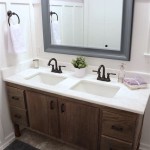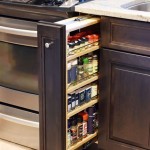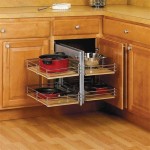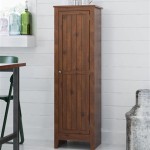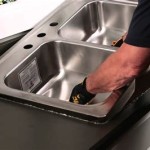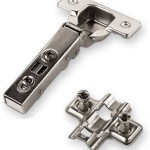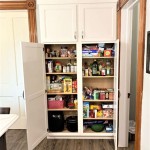Designing Functional and Stylish Angled Kitchen Cabinets
Angled kitchen cabinets present a unique design challenge and opportunity. These cabinets deviate from the standard rectangular or square forms, often incorporated to address architectural irregularities, maximize corner space, or introduce a distinctive aesthetic. Successfully integrating angled cabinets requires careful consideration of both functionality and style, ensuring that they contribute to the overall efficiency and visual appeal of the kitchen.
The design process should begin with a thorough assessment of the kitchen layout. Understanding the existing space, including any structural limitations or unusual angles, is crucial. This assessment informs the placement and configuration of the angled cabinets, allowing them to seamlessly integrate with the surrounding elements. Considerations include door swings, appliance locations, and traffic flow within the kitchen to avoid obstructions and maintain comfortable movement.
Furthermore, the desired aesthetic of the kitchen plays a significant role in the design of angled cabinets. Whether the goal is a contemporary, traditional, or transitional style, the cabinets should reflect this design intent. This encompasses the choice of materials, finishes, hardware, and overall cabinet construction. Consistency in these elements contributes to a cohesive and visually pleasing design.
Maximizing Space and Functionality in Angled Cabinets
One of the primary goals when designing angled kitchen cabinets is to optimize space utilization. Corners, in particular, can be challenging areas to access and utilize effectively. Angled cabinets offer a solution by creating a more accessible and ergonomic storage space. There are several strategies to maximise space:
Specialized hardware, such as lazy Susans, pull-out shelves, and blind corner organizers, are invaluable tools for maximizing the utility of angled cabinets. These accessories allow users to easily access items stored deep within the cabinet, eliminating the need to reach and potentially strain themselves. Lazy Susans are particularly effective for corner cabinets, providing a rotating platform that brings items to the front. Pull-out shelves, also known as sliding shelves, offer easy access to items stored on multiple levels. Blind corner organizers address the challenge of accessing the "blind" portion of a corner cabinet.
Innovative cabinet designs can also enhance functionality. For example, angled base cabinets can be designed with drawers instead of doors, providing easier access to stored items. Angled wall cabinets can be configured with glass doors to showcase decorative items or frequently used dishes. Furthermore, the depth of the angled cabinets can be customized to accommodate specific storage needs, such as oversized pots and pans or large appliances.
Careful planning of the internal cabinet layout is also essential. Adjustable shelves allow for customized storage configurations, accommodating items of different sizes and shapes. Dividers and organizers can be used to separate and contain items, preventing clutter and maximizing storage space. In the design of angled cabinets, the internal layout is as important as the external design.
Choosing the Right Materials and Finishes
The selection of materials and finishes for angled kitchen cabinets is crucial for both aesthetics and durability. The chosen materials and finishes should complement the overall kitchen design and withstand the rigors of daily use. Considerations include the type of wood, the type of finish, and the hardware used. These elements all play a role in the overall durability and appearance of the cabinets.
Wood is a popular choice for kitchen cabinets, offering a natural beauty and warmth. Different types of wood, such as maple, oak, cherry, and walnut, have distinct grain patterns and color variations. The choice of wood should be based on the desired aesthetic and the budget. Maple is a versatile and affordable option, while cherry and walnut offer a more luxurious look. Engineered wood products, such as plywood and MDF, are also commonly used in cabinet construction, offering stability and affordability.
Cabinet finishes protect the wood from moisture, stains, and scratches, while also enhancing the aesthetic appeal. Popular finish options include paint, stain, and lacquer. Paint provides a wide range of color choices and can be used to create a contemporary or traditional look. Stain enhances the natural grain of the wood and provides a warm, inviting feel. Lacquer provides a durable and glossy finish that is resistant to scratches and stains.
Hardware, such as knobs, pulls, and hinges, plays a functional and decorative role in kitchen cabinets. The choice of hardware should complement the overall cabinet design and the style of the kitchen. There are a wide variety of hardware styles and finishes available, from traditional to contemporary. Stainless steel and brushed nickel are popular choices for modern kitchens, while antique brass and oil-rubbed bronze are often used in traditional kitchens. The hardware should be both aesthetically pleasing and functional, providing a comfortable grip and smooth operation.
Integrating Angled Cabinets with Overall Kitchen Design
Angled cabinets should be seamlessly integrated into the overall kitchen design, creating a cohesive and harmonious space. This requires careful consideration of the surrounding elements, such as countertops, backsplashes, appliances, and lighting. The goal is to create a unified design that is both functional and aesthetically pleasing.
Countertops play a significant role in the overall kitchen design. The choice of countertop material and color should complement the cabinet finishes and the style of the kitchen. Granite, quartz, and marble are popular choices for countertops, offering durability and beauty. The countertop edge profile can also impact the overall look of the kitchen. A simple, straight edge is often used in contemporary kitchens, while a more ornate edge is often used in traditional kitchens.
Backsplashes provide an opportunity to add color, texture, and pattern to the kitchen. The backsplash material and design should complement the cabinets and countertops. Tile is a popular choice for backsplashes, offering a wide range of colors, sizes, and patterns. Glass and stone are also used for backsplashes, providing a more luxurious look. The backsplash should be both aesthetically pleasing and functional, protecting the wall from splashes and stains.
Lighting is an essential element of kitchen design. Proper lighting can enhance the functionality and aesthetic appeal of the kitchen. Under-cabinet lighting provides task lighting for countertops and helps accentuate the cabinet design. Recessed lighting provides ambient lighting for the entire kitchen. Pendant lighting can be used to highlight specific areas, such as islands or peninsulas. The lighting should be carefully planned and positioned to provide adequate illumination and create a warm, inviting atmosphere.
Finally, consider the overall traffic flow in the kitchen. Angled cabinets should be positioned in a way that does not obstruct movement or create bottlenecks. Door swings should be carefully planned to avoid collisions and maximize space. The placement of appliances, such as refrigerators and dishwashers, should also be considered in relation to the angled cabinets. A well-designed kitchen should be both functional and comfortable to use, allowing for easy movement and efficient workflow.
Careful planning and attention to detail can transform angled kitchen cabinets from an architectural constraint into a design asset. By focusing on maximizing space, selecting the right materials, and integrating the cabinets seamlessly with the overall kitchen design, homeowners can create a functional and stylish kitchen that meets their specific needs and preferences.

20 Smart Corner Cabinet Ideas For Every Kitchen

The Best Ideas To Optimize Kitchen Corner Cabinets Arched Manor

6 Of The Best Solutions For Kitchen Corner Units Fitzgerald Kitchens

Best Corner Kitchen Cabinet Ideas For Space August2025
11 Corner Kitchen Cabinet Ideas For Storage Solution

The Best Ideas To Optimize Kitchen Corner Cabinets Arched Manor

6 Of The Best Solutions For Kitchen Corner Units Fitzgerald Kitchens

20 Smart Corner Cabinet Ideas For Every Kitchen
11 Corner Kitchen Cabinet Ideas For Storage Solution

Blind Corner Kitchen Cabinets Ideas Rochon
Related Posts

